
How to Use Durian ESP32: Examples, Pinouts, and Specs
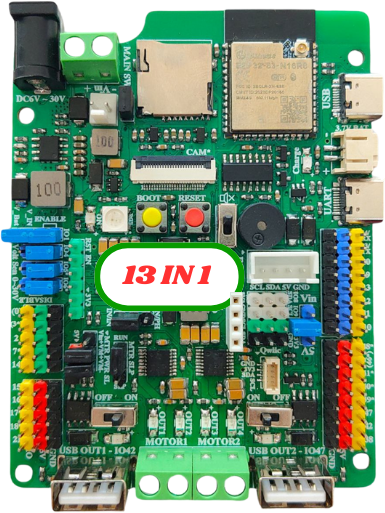
 Design with Durian ESP32 in Cirkit Designer
Design with Durian ESP32 in Cirkit DesignerIntroduction
The Durian ESP32 is a powerful and versatile microcontroller board designed for a wide range of applications, particularly in the Internet of Things (IoT) domain. It features built-in Wi-Fi and Bluetooth capabilities, making it ideal for wireless communication and smart device integration. With multiple GPIO pins, analog-to-digital converters (ADCs), and support for various programming environments such as Arduino IDE, MicroPython, and ESP-IDF, the Durian ESP32 is suitable for both hobbyists and professionals.
Explore Projects Built with Durian ESP32
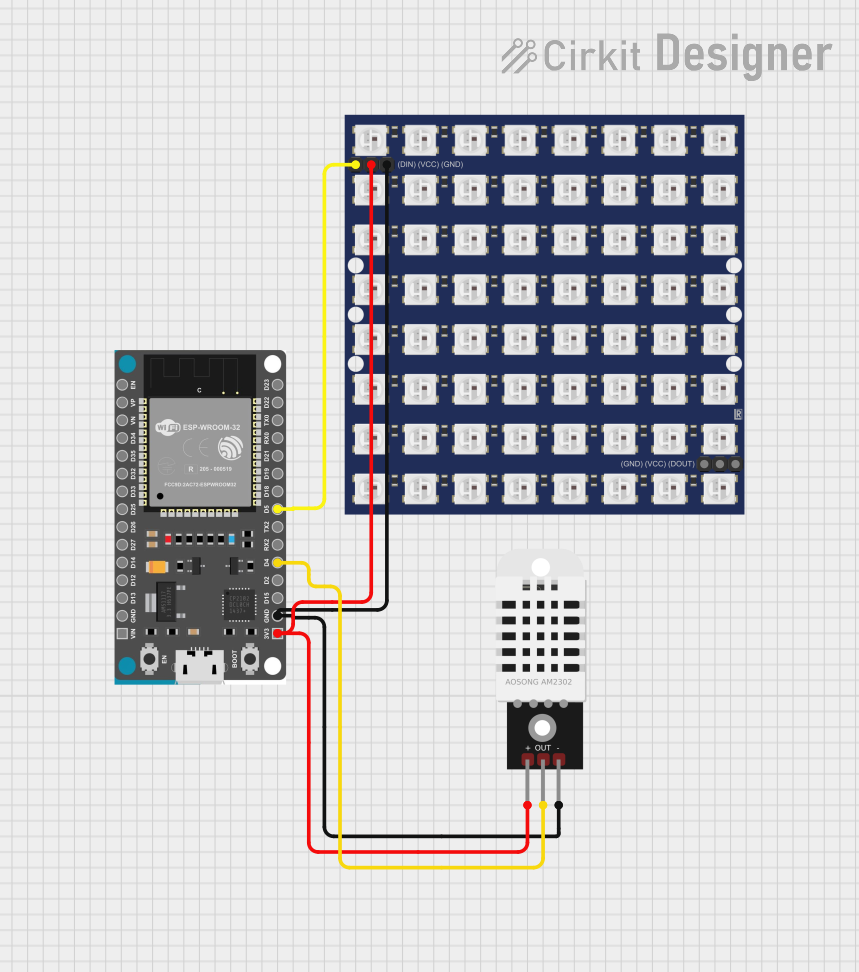
 Open Project in Cirkit Designer
Open Project in Cirkit Designer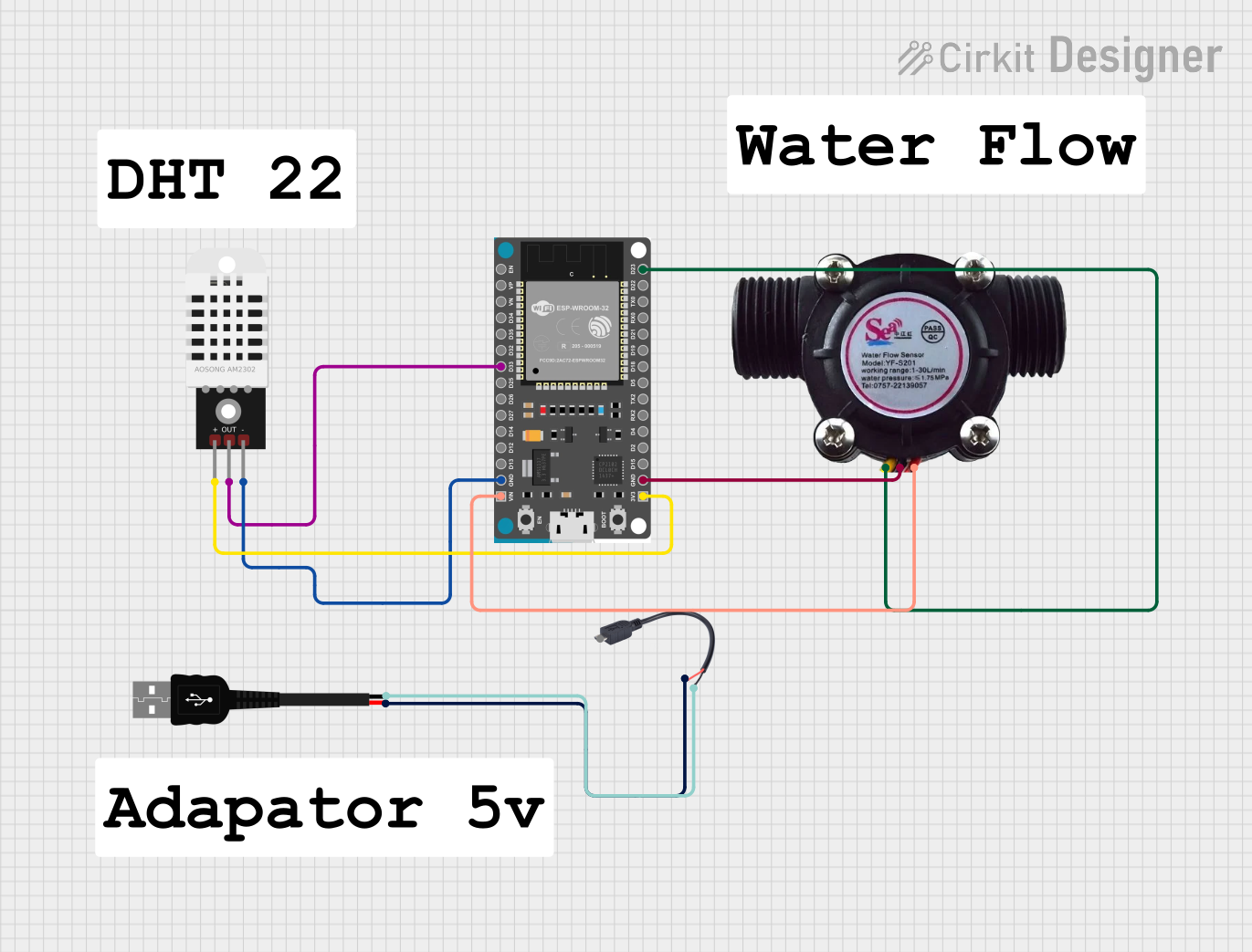
 Open Project in Cirkit Designer
Open Project in Cirkit Designer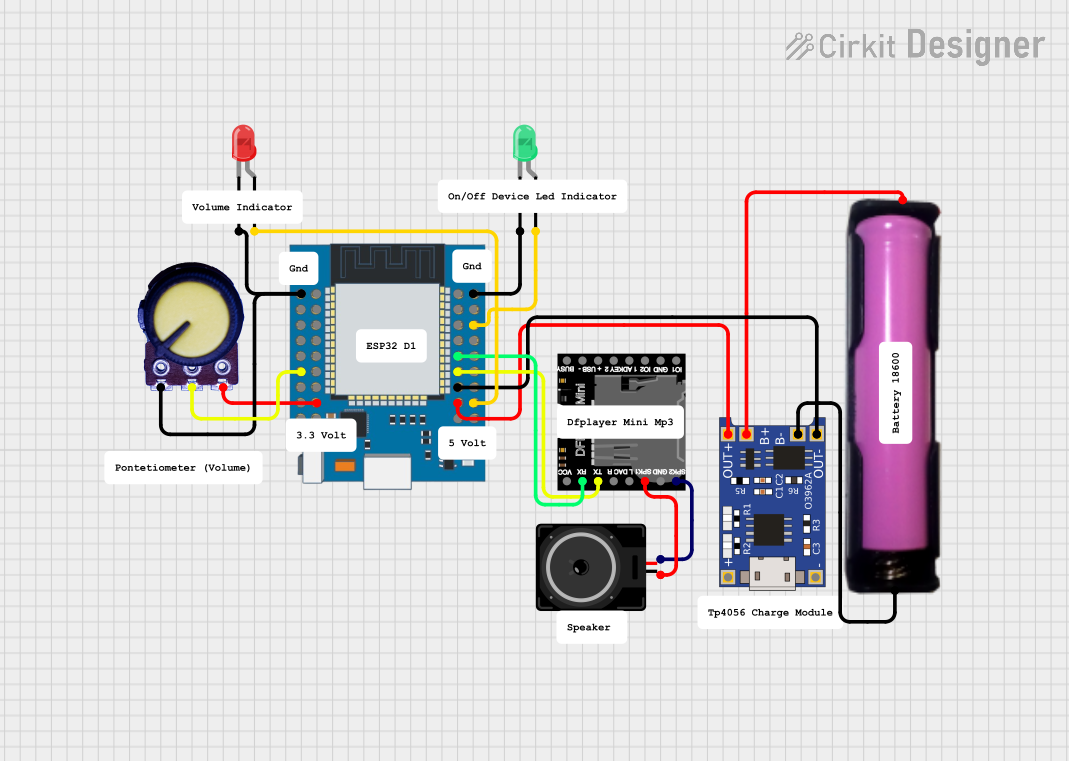
 Open Project in Cirkit Designer
Open Project in Cirkit Designer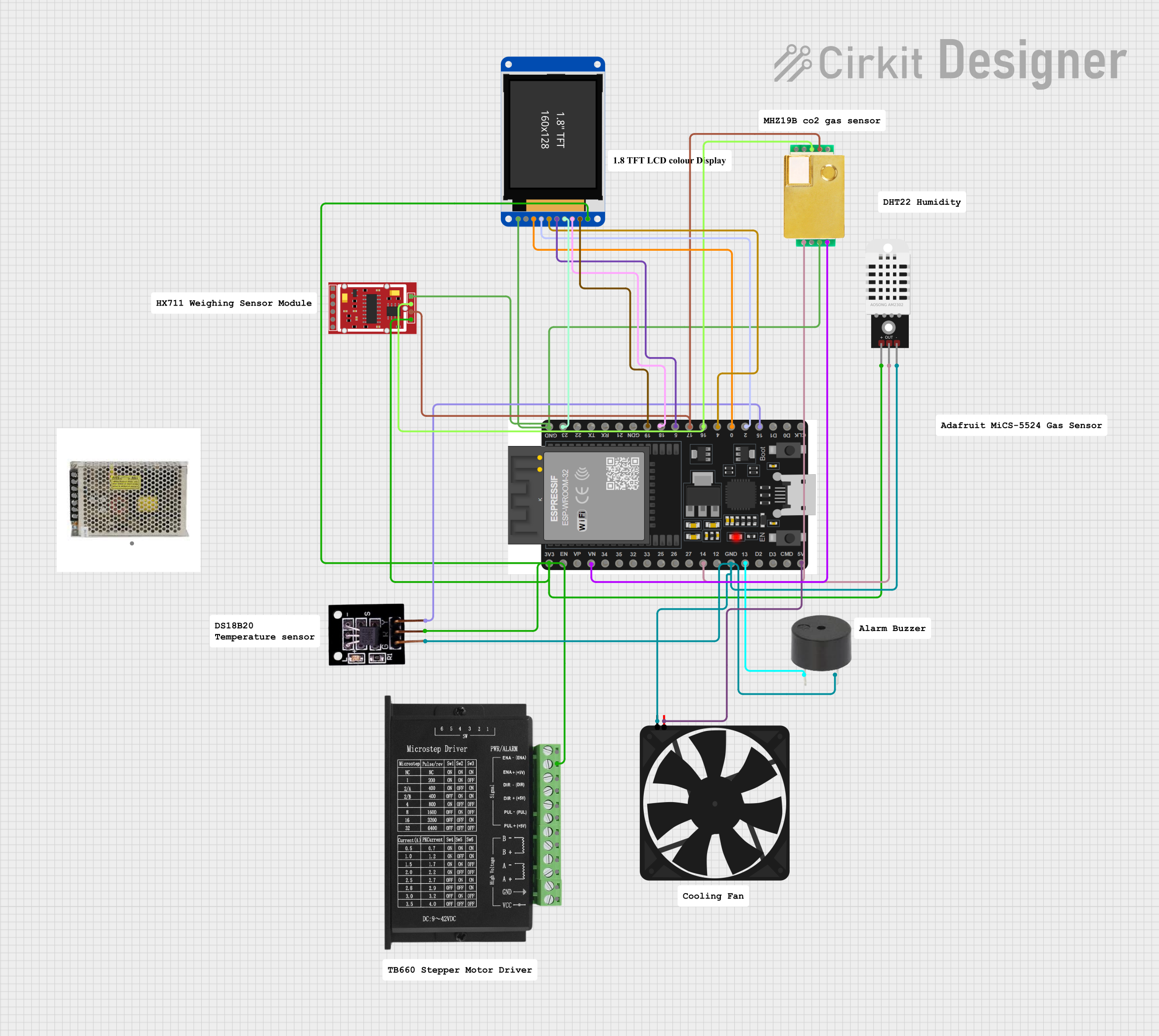
 Open Project in Cirkit Designer
Open Project in Cirkit DesignerExplore Projects Built with Durian ESP32

 Open Project in Cirkit Designer
Open Project in Cirkit Designer
 Open Project in Cirkit Designer
Open Project in Cirkit Designer
 Open Project in Cirkit Designer
Open Project in Cirkit Designer
 Open Project in Cirkit Designer
Open Project in Cirkit DesignerCommon Applications and Use Cases
- IoT devices and smart home automation
- Wireless sensor networks
- Robotics and automation systems
- Wearable technology
- Data logging and remote monitoring
- Prototyping and educational projects
Technical Specifications
The Durian ESP32 offers robust hardware capabilities to support a variety of applications. Below are its key technical specifications:
| Specification | Details |
|---|---|
| Microcontroller | Dual-core Xtensa® 32-bit LX6 |
| Clock Speed | Up to 240 MHz |
| Flash Memory | 4 MB |
| SRAM | 520 KB |
| Wi-Fi | 802.11 b/g/n |
| Bluetooth | v4.2 BR/EDR and BLE |
| Operating Voltage | 3.3V |
| Input Voltage (VIN) | 5V |
| GPIO Pins | 34 |
| ADC Channels | 18 (12-bit resolution) |
| DAC Channels | 2 |
| Communication Interfaces | UART, SPI, I2C, I2S, CAN |
| Power Consumption | Ultra-low power modes available |
| Dimensions | 51mm x 25.5mm |
Pin Configuration and Descriptions
The Durian ESP32 has a total of 38 pins, with the following key functionalities:
| Pin | Name | Description |
|---|---|---|
| 1 | VIN | Input voltage (5V) |
| 2 | GND | Ground |
| 3 | 3V3 | 3.3V output |
| 4-39 | GPIO0-GPIO39 | General-purpose input/output pins |
| 34-39 | ADC1 Channels | Analog-to-digital converter inputs |
| 25, 26 | DAC1, DAC2 | Digital-to-analog converter outputs |
| 21, 22 | SDA, SCL | I2C communication pins |
| 16, 17 | RX, TX | UART communication pins |
| 18, 19 | SCK, MISO | SPI clock and data pins |
Usage Instructions
The Durian ESP32 is easy to integrate into a variety of projects. Below are the steps and best practices for using the board:
How to Use the Durian ESP32 in a Circuit
Powering the Board:
- Use the VIN pin to supply 5V or connect the board via a USB cable to your computer or power source.
- Ensure the power supply is stable to avoid damaging the board.
Connecting Peripherals:
- Use the GPIO pins to connect sensors, actuators, or other peripherals.
- For analog sensors, connect them to the ADC pins (e.g., GPIO34-GPIO39).
Programming the Board:
- Install the Arduino IDE or another supported environment (e.g., MicroPython or ESP-IDF).
- Select "ESP32 Dev Module" as the board in the Arduino IDE.
- Connect the board to your computer via USB and upload your code.
Example Code for Arduino IDE
The following example demonstrates how to blink an LED connected to GPIO2:
// Example: Blink an LED on GPIO2
// Ensure the LED is connected to GPIO2 with a current-limiting resistor.
#define LED_PIN 2 // Define the GPIO pin for the LED
void setup() {
pinMode(LED_PIN, OUTPUT); // Set GPIO2 as an output pin
}
void loop() {
digitalWrite(LED_PIN, HIGH); // Turn the LED on
delay(1000); // Wait for 1 second
digitalWrite(LED_PIN, LOW); // Turn the LED off
delay(1000); // Wait for 1 second
}
Important Considerations and Best Practices
- Voltage Levels: The GPIO pins operate at 3.3V. Avoid applying 5V directly to these pins to prevent damage.
- Power Consumption: Use the ultra-low power modes for battery-powered applications.
- Wi-Fi and Bluetooth: Avoid placing the board near metal objects or enclosures that may interfere with wireless signals.
Troubleshooting and FAQs
Common Issues and Solutions
The board is not detected by the computer:
- Ensure the USB cable is functional and supports data transfer.
- Install the correct USB-to-serial driver for the Durian ESP32.
Code upload fails:
- Check that the correct board and COM port are selected in the Arduino IDE.
- Press and hold the "BOOT" button on the board while uploading the code.
Wi-Fi connection issues:
- Verify the SSID and password in your code.
- Ensure the Wi-Fi network is within range and not overloaded.
GPIO pin not working:
- Confirm the pin is not being used for another function (e.g., ADC, UART).
- Check for short circuits or incorrect wiring.
FAQs
Can I power the Durian ESP32 with a battery?
Yes, you can use a 3.7V LiPo battery connected to the 3V3 pin or a 5V source to the VIN pin.What is the maximum current output of the GPIO pins?
Each GPIO pin can source or sink up to 12mA. For higher currents, use an external transistor or relay.Can I use the Durian ESP32 with MicroPython?
Yes, the Durian ESP32 supports MicroPython. Flash the MicroPython firmware to the board and use a compatible IDE like Thonny.
By following this documentation, you can effectively utilize the Durian ESP32 for your projects and troubleshoot common issues with ease.